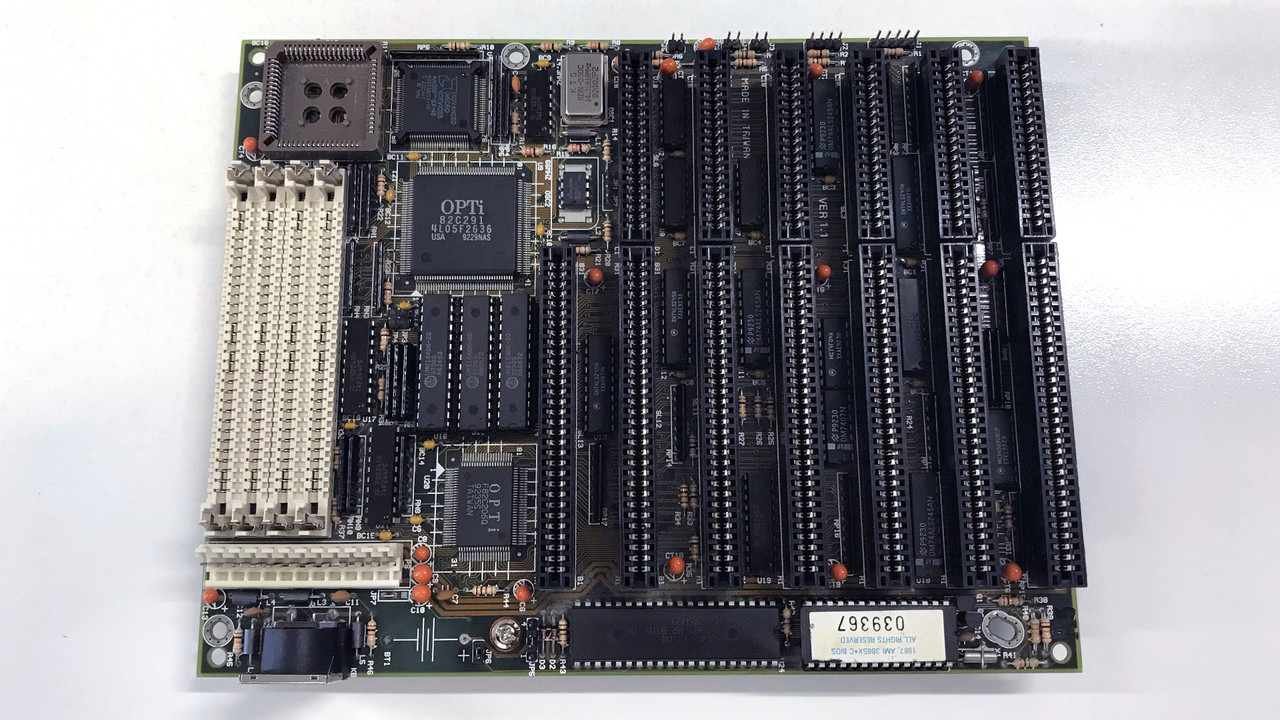First post, by appiah4
- Rank
- l33t++
On a whim I bought and restored a mystery Baby AT 386 motherboard a while back; I was hoping it was a DX40 - Nay, I was CERTAIN it was a DX-40 because I could read the "40" bit on the CPU (the rest was covered in dirt) but when it arrived and I cleaned it, it turned out to be an SX40:
So I guess the question is, considering this is the slowest CPU and motherboard I own, and the next step up build I have is a 486, does this board serve any purpose? Would it be fun to build around this and pretend it's basically a 286?
And ultimately, why? Why did such things as a 386 SX-40 exist? Was there demand for such high clockspeed bandwidth starved crippled CPUs at the time? Maybe for business purposes?
